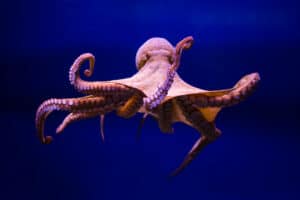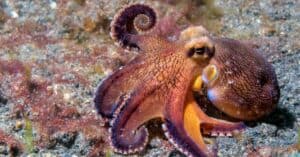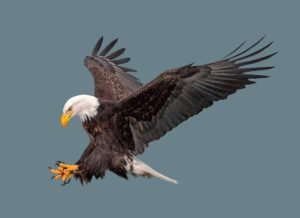Ah, the octopus. Nature’s most curious creature. An eight-limbed enigma wrapped in a veil of mystery, these slippery creatures have fascinated humans for centuries. And one of the most common questions people have about them is: do octopuses have bones?
Do Octopuses Have Bones?
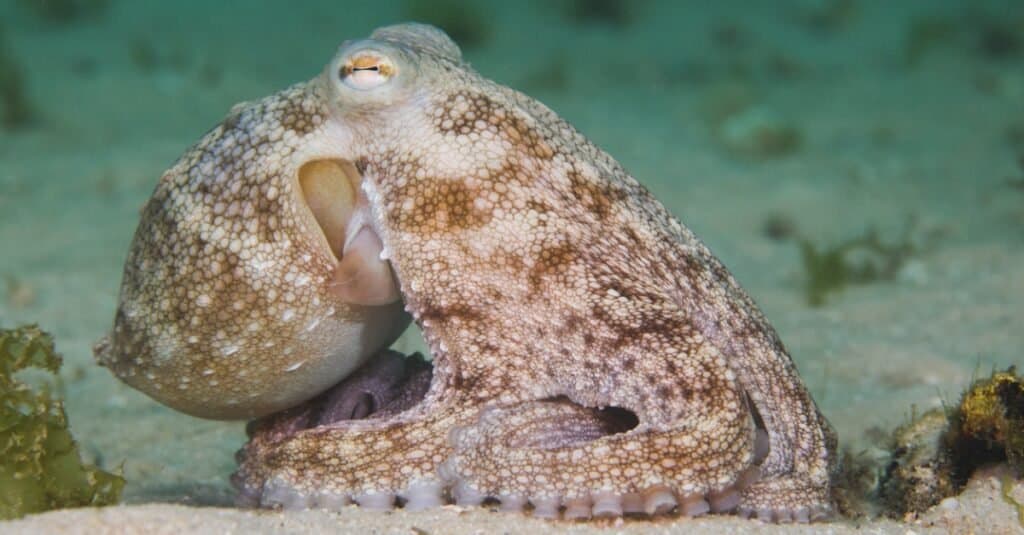
Octopuses use their lack of bones to their advantage.
©iStock.com/Madelein_Wolf
It turns out that the answer to this question is a bit more complicated than you might think.
The answer is both “no” and “maybe.” Technically no, octopuses do not have bones. However, while they may look like a bunch of squishy tentacles, octopuses do have something that resembles bones — though they’re not exactly the same as human bones. Octopuses are invertebrates, meaning they don’t have a spine or any other kind of bony internal skeleton.
In water, octopuses don’t really have a need for hard bones — the water pressure does a good enough job of supporting the octopus’s body on its own. If an octopus were to live on land, however, it would likely evolve to have hard bones as other land animals do.
Instead of bones, octopuses are supported by a series of well-developed muscles, or muscular hydrostats, that run along the length of their bodies. These muscular hydrostats provide an overall framework to the octopuses’ bodies, making up their own unique type of “hydrostatic skeleton.” Muscular hydrostats are like the muscles in our tongues – they are strong, can stretch, and can move around, but they lack bones. Essentially, instead of a rigid, bony skeleton, octopuses have their own unique type of flexible skeleton.
Do Octopuses Have Teeth?
Since octopuses do not have bones, they also do not have teeth. Instead, they have a beak, kind of like a parrot. In fact, the only “hard” portion of an octopus’s body is its beak. Octopus beaks are made of a strong substance called chitin. It’s kind of like the keratin that makes up our fingernails. An octopus’s beak is a very sharp and strong tool that it uses to slice through its prey. The beak is also used for defense and can deliver a painful bite if necessary. Octopuses are carnivorous creatures, and their beaks help them to tear apart the flesh of their food.
How Do Octopuses Move Without a Skeleton?
Octopuses have eight tentacles that are packed with very strong, well-developed muscles and muscular hydrostats that have excellent dexterity. Without the weight of mineral-dense bones, octopuses use the buoyancy of their bodies and these strong tentacles to move about the ocean. They also have a siphon, which can expel jets of water to help propel them through the water. Turns out octopuses don’t really need bones at all!
Advantages of Having a Boneless Body
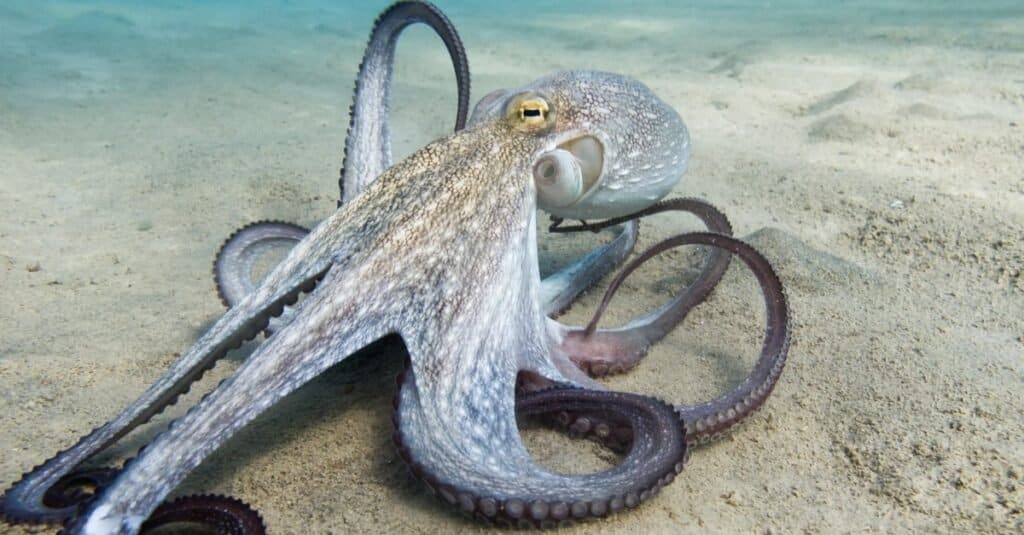
Octopuses have three hearts: one pumps blood around the body, and the other two pump blood to the gills.
©ennar0/Shutterstock.com
Octopuses are cephalopods, which have been around for a very long time — in fact, cephalopods were on the earth over 500 million years ago! The early ancestors of today’s octopuses had shells that protected their bodies, much like other mollusks (i.e., snails, oysters, clams, etc.). However, sometime around 140 million years ago, they began evolving bodies without a shell. Their new shell-less bodies gave them much more flexibility and agility, but they also made them more vulnerable to dangerous and hungry predators.
You might think that it’s tough living without a bony skeleton or a hard protective shell, but it turns out that there are actually many advantages to life without bones. Since octopuses don’t have any type of rigid internal skeleton, they can contort their flexible bodies into all kinds of different shapes. They can also squeeze into very small spaces — very, very small places. Believe it or not, a 600-pound octopus can fit its entire body through an opening the size of a U.S. quarter! Basically, an octopus can squeeze its body through any opening that is big enough for its hard beak to pass through.
In fact, octopuses are known as some of the world’s most exceptional escape artists because of this unique ability. Back in 2016, for example, “Inky,” the octopus, escaped from New Zealand’s National Aquarium by squeezing his large body through 164 feet of a thin, narrow drain pipe that eventually led out into the ocean!
Of course, this ability comes in handy in the wild as well. Octopuses can squeeze their way into crab traps for a quick bite to eat and get to prey in seemingly impossible places. They can also escape from predators into small spaces and through small openings without the fear of being followed.
If Octopuses Don’t Have Bones, Are There Any Octopus Fossils?
Although there are octopus fossils, they are not common. Fossils from vertebrates — like dinosaurs— are much more widespread, since bones do not easily disintegrate. The fossils of animals that lack bones, like invertebrates, are much harder to find — especially soft-bodied animals like octopuses. When an octopus dies, its soft body naturally disintegrates, liquefying the skin and tissue and not leaving much (if anything) else behind.
However, while they are rare, scientists have found a few examples of octopus fossils over the years. In fact, there are octopus fossils that are nearly 100 million years old that show remnants of eight legs, suckers, and even ink stains.
Up Next:
- Are Octopuses Poisonous?
- 10 Incredible Octopus Facts
- What’s a Baby Octopus Called + 4 More Amazing Facts!
- How Many Hearts Does an Octopus Have?
The photo featured at the top of this post is © Henner Damke/Shutterstock.com
Sources
- Wiley Online Library, Available here: https://onlinelibrary.wiley.com/doi/abs/10.1111/1475-4983.00155
- ResearchGate, Available here: https://www.researchgate.net/profile/Yoram-Yekutieli/publication/10987744_How_to_move_with_no_rigid_skeleton_The_octopus_has_the_answers/links/0c96051c89c403446e000000/How-to-move-with-no-rigid-skeleton-The-octopus-has-the-answers.pdf
Thank you for reading! Have some feedback for us? Contact the AZ Animals editorial team.



